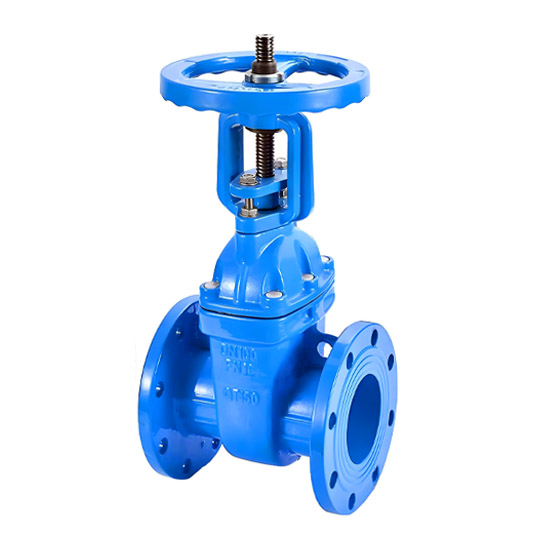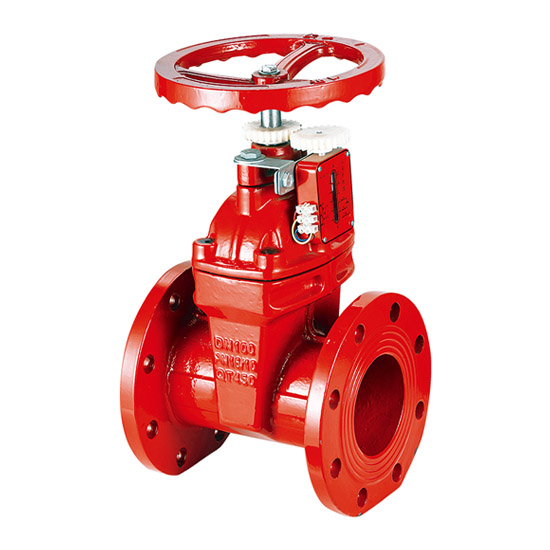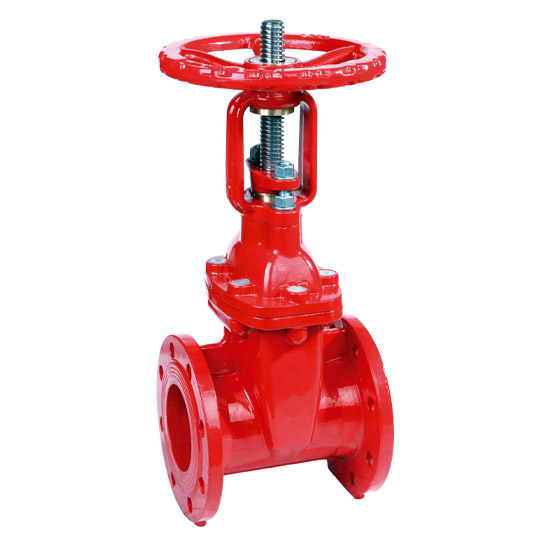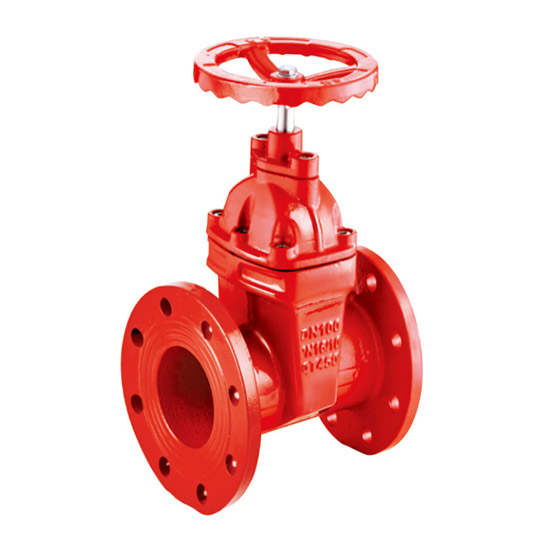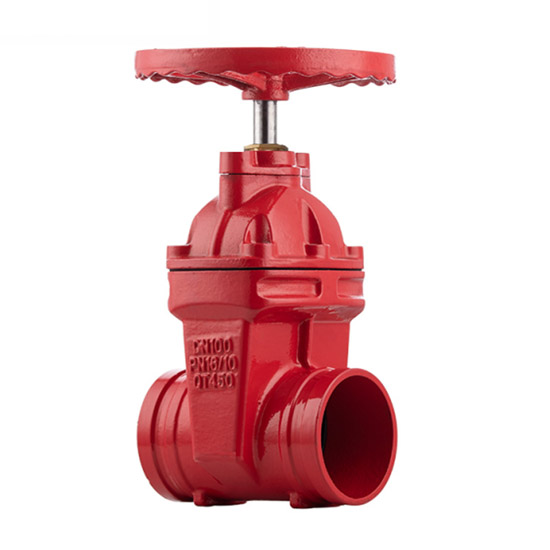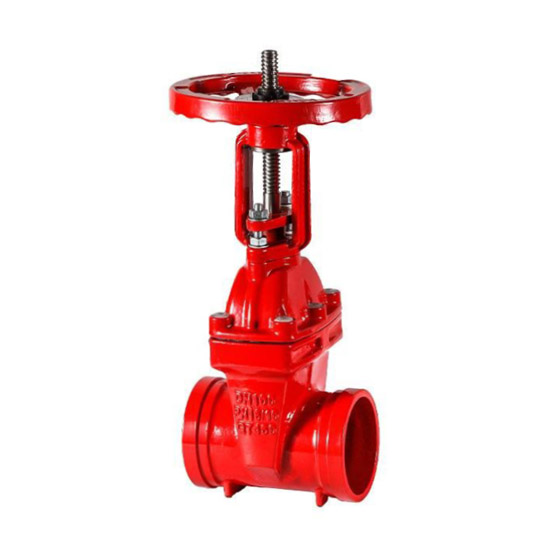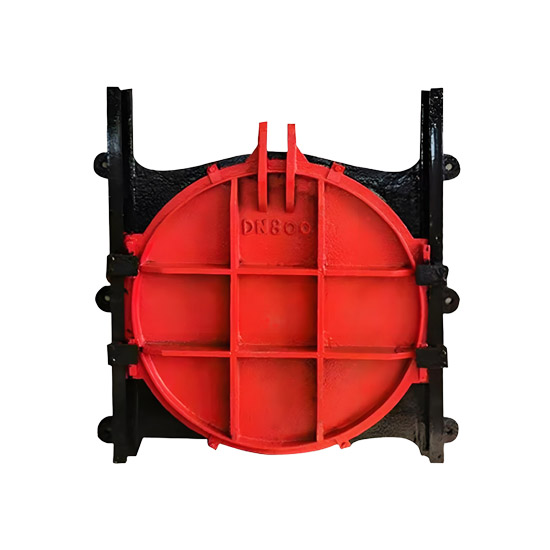I. Valve Overview
1. Product Definition and Application
The rising stem resilient seated gate valve is a shut-off valve that controls the flow of media by vertically raising or lowering the gate along the exposed stem. Key features include:
• Resilient Sealing Structure: The gate is coated with elastic materials such as EPDM, NBR, or VITON rubber. Upon closing, the elastic layer compensates for minor deformation, ensuring bidirectional zero-leakage sealing.
• Rising Stem Drive System: The stem is rigidly connected to the gate and fully exposed during operation (trapezoidal thread drive). The gate is driven linearly by a handwheel or actuator, and the stem height clearly indicates the valve’s open/closed position (fully open → stem at top; fully closed → stem at bottom).
• Flat-Bottom Seat Design: The bottom of the flow path is free of grooves that trap debris, resulting in low fluid resistance. Ideal for clean or mildly corrosive media systems such as municipal water supply and drainage, building water systems, wastewater treatment, HVAC, and light industrial fluid transport.
2. Model Code Interpretation
Example: Z41X-16Q
• Z: Gate valve type
• 4: Connection type (flanged)
• 1: Structure type (resilient seated)
• X: Sealing surface material (rubber soft seal; options include X-EPDM, V-VITON)
• 16: Nominal pressure (PN16, 1.6 MPa)
• Q: Body material (ductile iron; other options: C – cast steel WCB, P – stainless steel CF8, R – 316L)
Other common models:
• Z41E: Flanged rising stem, EPDM soft seal (excellent weather resistance)
• Z941X: Electric actuated type
• Z641X: Pneumatic actuated type
• Wafer-type gate valve (e.g., Z73X) requires additional flange installation
II. Main Technical Parameters
1. Pressure Ratings and Test Standards
• Nominal Pressure (PN): PN10 (1.0 MPa), PN16 (1.6 MPa), PN25 (2.5 MPa)
• Strength Test Pressure: 1.5×PN (≥15 min pressure holding without deformation or leakage)
• Sealing Test Pressure: 1.1×PN (≥15 min bidirectional pressure holding without leakage), in accordance with GB/T 13927 / API 598 general test specifications
2. Applicable Operating Conditions
• Operating Temperature:
– Standard rubber seals (EPDM/NBR): 0℃ ~ +80℃ (short-term ≤120℃; EPDM preferred for steam / hot water systems)
– Fluororubber (VITON): -20℃ ~ +180℃ (excellent chemical resistance)
– Special high-temperature liners: up to +200℃ (customizable)
• Applicable Media:
– Water (drinking / wastewater)
– Air
– Steam (≤120℃ short-term)
– Oil (non-solvent type)
– Mildly corrosive liquids (diluted acids and alkalis)
• Body Materials:
– Ductile iron (QT450, economical)
– Cast steel (WCB)
– Stainless steel (CF8 / CF8M)
– Low-temperature steel (LCB)
• Gate / Stem Materials:
– Ductile iron gate with rubber coating (elastic wear compensation)
– Stem made of stainless steel (2Cr13 / 304 / 316), blowout-proof design ensures long-term reliability
• Bonnet / Support Bracket:
– Cast iron or cast steel structure
– Dezincification-resistant brass nut (hardness > stem)
3. Structural Dimensions
• Nominal Diameter: DN50~DN1200 (larger sizes customizable)
• Flange dimensions and face-to-face length (L) comply with GB/T 12221 (straight-through type) or corresponding international standards (ASME B16.1 / EN 1092)
• Full bore flow path design ensures fluid resistance approaches zero
III. Structure and Operating Principle
1. Advantages of Resilient Seated Design
• Friction-Free Sealing Mechanism: The rubber-coated gate contacts the flat-bottom seat without sliding friction. The elastic material adapts to pipeline pressure fluctuations and thermal expansion/contraction, extending sealing life.
• Bidirectional Sealing Reliability: No directional requirement (media flow direction is unrestricted). The body arrow is for reference only and helps optimize sealing longevity.
• Self-Cleaning Capability: The flat-bottom seat prevents debris accumulation (superior to grooved wedge-type gate valves), reducing maintenance frequency.
2. Rising Stem Drive System
• Visual Opening Indication: The handwheel position at the top of the stem directly reflects gate travel (fully closed → fully open corresponds to stem fully retracted → fully extended)
• Trapezoidal Thread Drive: Handwheel rotation is converted into linear stem motion via nut, efficient and low-torque. Worm gear mechanism optional for large-diameter valves DN≥300
• Triple Sealing Protection: Stem packing chamber includes multiple O-rings / V-type seals (NBR / EPDM material), significantly reducing friction during operation and preventing external leakage
3. Operating Mechanism
• Opening: Counterclockwise rotation of handwheel raises stem, gate lifts off seat, flow path fully opens (flow resistance coefficient approaches 1)
• Closing: Clockwise rotation lowers gate to seat, rubber layer undergoes interference compression + medium pressure self-tightening, achieving zero-leakage sealing
• Limit Protection: Fully open position corresponds to stem at top (prevents over-travel and thread damage). For long-term operation, reverse 1/2–1 turn to compensate for thermal expansion and avoid stem lock-up
IV. Main Technical Standards and Certifications
• Design Standards:
– GB/T 24924 (Resilient Seated Gate Valves for Water Supply Systems)
– CJ/T 216 (Soft Sealed Gate Valves for Water Supply and Drainage)
– API 609 (Soft Sealed Gate Valve Structure)
• Test Standards:
– GB/T 13927 (General Pressure Test)
– AWWA C509 (Resilient Seated Valves for Water Supply and Drainage)
– BS 6755 (Fire-safe compliance; some models with metal backing)
• Connection Standards:
– GB/T 17241.6 (Cast Iron Flanges)
– GB/T 9113 (Steel Flanges)
• Special Certifications:
– WRAS (Drinking Water Safety)
– NSF (Food Contact Compliance)
– ATEX (Explosion Protection for Hazardous Environments)
Hot Tags:


